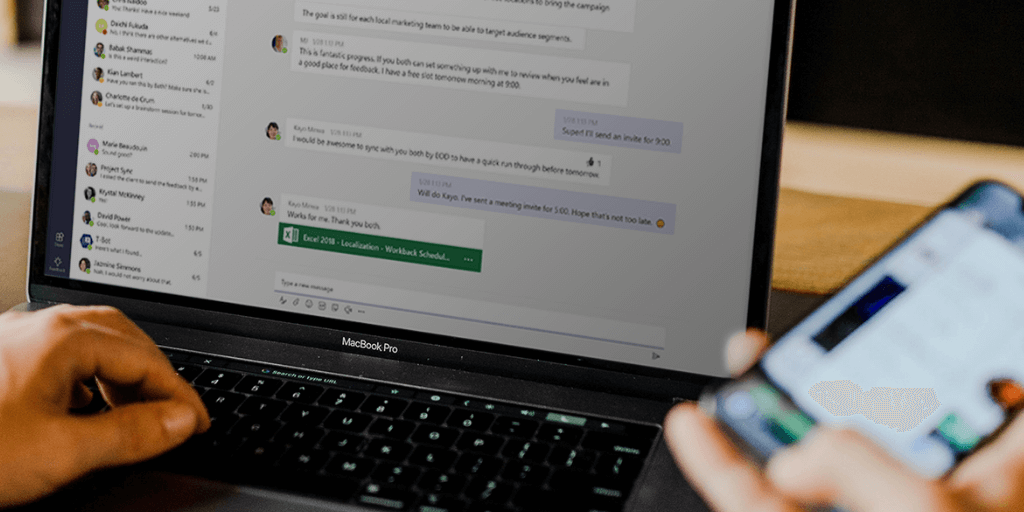
Tips, Tools, and Tactics for Working from Home
The COVID-19 pandemic we are currently living through has put a spotlight on the growing—and now more urgent—need to support efficient remote collaboration. While dispersed teams have been a growing trend for quite a while, recent events have accelerated the timeline for many organizations that were merely considering remote work. Suddenly, we are not only witnessing this major shift in how work gets done—we’re participants in it.


The bottom line: Organizations need to adapt. Quickly.
In an effort to help individuals and companies make the transition more smoothly, we recently shared some of our best advice on how to work efficiently from home during COVID-19 and beyond. Today’s post expands on some of those ideas and also includes some additional “pro” tips that look at specific solutions for how we can best work together.
Effective Tips and Tools for Working from Home
Solution 1: Video Conferencing and Virtual Meetings
One of the most jarring disconnects of moving from an office-based to a remote working arrangement is the lack of in-person connection. Unfortunately, audio calls and teleconferences are not an effective way to reduce the sense of dislocation. Lacking visual stimuli, colleagues tend to lose focus on conversations, making meetings less productive.
Using webcams and video apps for meetings and peer-to-peer calls not only enables a more personal connection, it helps to keep colleagues focused and engaged, which in turn increases efficiency.
Solution 2: Social Collaboration
Capturing the ideas, value, and synergy of ad hoc, in-person conversations can become a struggle when an entire team or division is suddenly working remotely. In many situations, calls, emails, and other traditional means of electronic communication pale in comparison to face-to-face collaboration. In scenarios where three or more individuals need to work together, in-person interactions make collaboration much easier.
You can, however, level up your virtual meetings by pairing threaded conversations and cloud- based document collaboration with video calls, whiteboard apps, and other digital tools to provide the best facsimile of the "project room" environment.
Solution 3: Multi-screen and Digital Accessories
When all information is flowing through a single visual channel (e.g., a laptop or smartphone), even experienced remote workers can be overwhelmed. It’s hard to keep up when everything is happening in the same space at the same time. For instance, active participation in video calls and conferences can dominate a screen, crowding out other necessary tools and references.
Utilizing multiple form factors is a best practice for sustained remote work. Access to a second device or monitor screen is ideal, as is the use of more traditional tools—never underestimate the value of a pen and paper.
Solution 4: Knowledge Management
Your colleagues' knowledge is an asset as real as any data or physical investment, but one that can be difficult to tap into even when you’re working in the same office. Add in the element of working remotely, and it can feel impossible to access vital sources of information. In remote scenarios, even the convenience of asking a trusted colleague for ad hoc assistance is unavailable.
In times of prolonged disconnection, a modern knowledge management platform can leverage the power of AI to predictively sort, filter, and supply the knowledge an employee needs to complete a task.
Solution 5: Over Communication
The lack of face-to-face contact with colleagues can create motivation and accountability issues.
You can help nip such issues in the bud by creating a set of regularly scheduled “culture” meetings in which the team comes together for the sole purpose of connecting in a “human,” person-to-person way.
For best results, allow space for virtual fun and encourage social activity through digital tools. You may also consider establishing or expanding a “buddy” program to ensure that everyone has someone checking in on them.
Solution 6: Learning Enablement
For many, working remotely will be a change that’s as big a deal as switching jobs. Working in a different place with different rules—and potentially entirely different experiences—can be stressful.
Create or expand learning assets to ensure new remote workers have easy access to the materials that will help them make the transition gracefully. Establish a community for remote workers to share best practices, tips and tricks, and key assets with each other.
Solution 7: Microsoft Crisis Communications App
Microsoft offers a free app to manage crisis communications.
Employees can report their work status (e.g., working from home) and make requests. This helps managers coordinate across their teams and helps central response teams track status across an organization.
Admins can use the app to push news, updates, and content specific to their organization. They can also provide emergency contacts specific to different locations.
The app includes the ability to add RSS feeds of up-to-date information from reputable sources such as WHO, CDC, and local authorities.
Solution 8: Mobile Push of Personalized News
Personalizing communication and providing easy access to knowledge, information, and people typically means putting it directly in their hands—and in this day and age, that means targeting people on their mobile devices. A modern digital workplace platform will offer multiple options for collaboration and communication regardless of form factor. This is particularly true of the solutions we build on the Microsoft 365 platform with SharePoint Online, Yammer and Teams. Some considerations when using this platform:
Build assuming mobile consumption as a primary form factor
You can distribute SharePoint-based content within the SharePoint Mobile App
Easily create content with multiple layouts and a wide variety of functional widgets
Promote your story to multiple channels (e.g. Yammer, E-Mail, Teams)
Users can automate notifications, alerts and content subscriptions to stay up-to-date
Solution 9: Team Code of Conduct
Setting clear expectations for roles, responsibilities, and protocols is critical to the success of dispersed teams. You can achieve clarity by creating and sharing a simple crisis governance plan that includes direction on things like when to use chat, why to create an email, when it’s important to pick up the phone, and so forth. You can also address things like how to strike the right balance of meetings to other types of communication and defining how long the meetings you have should run.
Solution 10: Most Importantly — Don’t panic
Above all else, take a deep breath and remember that things will return to normal soon enough. Until they do, take heart, stay safe, find ways to help. Once you’ve done that, follow the tips we shared and lean on us—your partners—while you pull the corner of the universe that you, yourself control into a semblance of normalcy.
We have been the industry leader in solving these very challenges for over a decade. We are living this situation alongside all our partners and clients. Our goal is to approach this most recent global challenge with a balanced point of view and a commitment to being mindful of our voice in this critical situation.
At the end of the day, the most important thing to remember is that we are all in this together, and together is exactly how we’ll see our way through to the other side.


